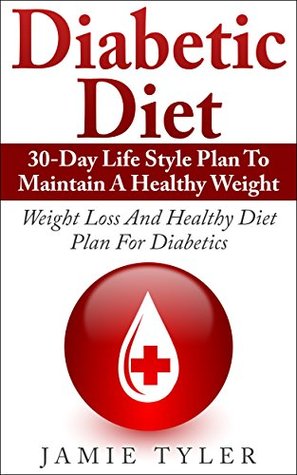
Food intolerance is an adverse reaction to a food. This allergy is caused when the body is unable to absorb a specific type of protein. Lactose is a common example of a food causing an intolerance. Sometimes, it can cause gastrointestinal symptoms, such as bloating or stomach discomfort. It can also cause diarrhea in some cases. The history of the patient is enough to determine if this condition exists. A breath test can also determine whether you are sensitive to lactose, and a prescription can be obtained to replace the enzyme.
Although serious food allergies can cause severe and sometimes fatal complications, they do not require the immune system to respond. Food intolerances require no strong immune response. People with lactose intolerance might experience cramping or diarrhea after eating dairy products. Gluten intolerance can also cause symptoms in the gastrointestinal tract. This condition is not caused by a food allergy and can be passed on to the next generation.

Another form of food allergy is food intolerance. Food intolerance is not a condition that affects the immune system. However, symptoms can be severe and even fatal. Food allergies usually manifest within minutes to two hour after the victim eats the affected food. Anaphylaxis must be treated immediately, as it can cause severe allergic reactions and even death.
Food intolerance refers to a type of allergy that occurs when a food ingredient is swallowed. This is not an immunological reaction but a chemical response. This disorder can also be associated with asthma and chronic fatigue syndrome. Food intolerance can cause a wide range of health problems. A person who has a known allergy to a certain food should always carry an auto-injector filled with epinephrine with them at all times.
A food intolerance is an allergic reaction to food that does not affect the immune system. It's a form of allergy in which a person reacts against a particular ingredient in food. In other words, an allergic reaction to a food is an involuntary and is not triggered by the immune system.

A food allergy is an allergic reaction to a particular food. This happens when your body does not respond appropriately to a particular food. It could be an allergy if you are continually eating foods that are unsafe. An allergic reaction could be caused by a malfunction in the immune system. An allergy does not cause anaphylactic reaction symptoms.
FAQ
What is the difference between sugar and fat?
Fat is an energy source that comes from food. Sugar is naturally found in fruits and veggies. Both sugars and fats have the same calories. Fats however, have more calories than sugars.
Fats are stored within the body and can contribute to obesity. They can lead to cholesterol buildup in the arteries, which could cause heart attacks or strokes.
Sugars are quickly absorbed by the body and provide instant energy. This causes blood sugar levels to rise. High blood glucose levels can lead to type II diabetes.
Exercise: Good or Bad for Immunity?
Exercise is good exercise for your immune system. Your body creates white blood cells when you exercise that fight infection. Your body also eliminates toxins. Exercise helps to prevent heart disease and cancer. It also reduces stress levels.
Exercising too often can cause your immune system to be weaker. Exercising too hard can make your muscles sore. This can cause inflammation as well as swelling. In order to fight infection, your body must produce more antibodies. However, these antibodies can also cause allergic reactions and autoimmune diseases.
So, don't overdo it!
How can my blood pressure be controlled?
Find out the causes of high blood pressure first. Next, take steps that will reduce the risk. You can do this by eating less salt, losing weight, or taking medication.
Exercise is also important. If you don't have time for regular exercise, then try walking as often as possible.
A gym membership is a good idea if you don't like how much exercise your doing. A gym that has other members who are motivated by your goals will be a good choice. It's much easier to follow a routine if someone is with you at the gym.
What is the problem with BMI?
BMI stands for Body Mass Index. This is a measure of body fat that is calculated based on height or weight. This formula calculates BMI.
Divide the weight in kilograms by the height in meters squared.
The result is expressed using a number from 0 through 25. A score greater than 18.5 is considered overweight. A score greater than 23 is considered obese.
A person who is 100kg and 1.75m tall will have a BMI 22.
How does an anti-biotic work?
Antibiotics are medications that kill harmful bacteria. Antibiotics are used for treating bacterial infections. There are many kinds of antibiotics. Some can be taken orally while others are injected. Others are topically applied.
People who have been exposed are often given antibiotics. One example is if someone has had chickenpox and wants to prevent shingles. Or, if someone has had strep throat, he or she might receive an injection of penicillin to help prevent pneumonia.
Doctors should prescribe antibiotics to children. Children are at greater risk than adults for developing serious side effects from taking antibiotics.
Diarrhea being the most common side effect of antibiotics. Other side effects possible include dizziness, nausea, vomiting, stomach cramps, dizziness and allergic reactions. These symptoms generally disappear once the treatment has finished.
How to measure body weight?
A Body Fat Analyzer will give you the most accurate measurement of body fat. These devices can be used to measure body fat percentages in people who are trying to lose weight.
Why does weight change as we age?
How do you know if your bodyweight changes?
Weight loss happens when there is less muscle mass and more fat. This means that daily energy needs must be greater than the calories consumed. The most common cause of weight loss is decreased activity levels. Other reasons include poor eating habits, stress, hormone imbalances, certain medications and illness. A person who has more fat than their muscle mass will experience weight gain. It occurs when people eat more calories than what they use in a given day. There are many reasons for this, including overeating and increased physical activity.
We eat less calories than we burn, which is the main reason our bodies lose weight. By exercising regularly, our metabolism rates increase which in turn burns more calories during the day. This doesn't necessarily mean we will lose weight. What matters is whether we are losing fat or building muscle. If we're burning more calories than we're consuming then we're going to lose weight. However, if we consume more calories than we burn, we end up storing them as extra fat.
As we age, we become less agile and don't move as often. We also tend eat less than we used to. Therefore, we tend to put on weight. On the flipside, we are more muscular than we really need and appear bigger.
Without regularly weighing yourself, it is impossible to gauge how much weight you have lost. There are many ways to determine your weight. You can check your waist size, your hips, your thighs, your arms, etc. Some people prefer to use bathroom scales while others like to use tape measures.
To track your progress, weigh yourself once a week. Measure your waistline once per month. To see how far you have come, you can take photos of yourself every few month.
You can also look up your height, weight and body measurements online to determine how much you weigh. You'd likely weigh 180 pounds if you were 5'10 tall and 180 pounds if you were 180lbs.
Statistics
- nutrients.[17]X Research sourceWhole grains to try include: 100% whole wheat pasta and bread, brown rice, whole grain oats, farro, millet, quinoa, and barley. (wikihow.com)
- WHO recommends reducing saturated fats to less than 10% of total energy intake; reducing trans-fats to less than 1% of total energy intake; and replacing both saturated fats and trans-fats to unsaturated fats. (who.int)
- According to the Physical Activity Guidelines for Americans, we should strive for at least 150 minutes of moderate intensity activity each week (54Trusted Source Smoking, harmful use of drugs, and alcohol abuse can all seriously negatively affect your health. (healthline.com)
- This article received 11 testimonials and 86% of readers who voted found it helpful, earning it our reader-approved status. (wikihow.com)
External Links
How To
What does the term "vitamins" mean?
Vitamins are organic compounds that can be found in foods. Vitamins are essential for our bodies to absorb nutrients from the foods we eat. Vitamins cannot be made by the body; they must be taken from food.
Two types of vitamins exist: water-soluble vitamin and fat-soluble vitamin. Water-soluble vitamins dissolve in water easily. Vitamin C,B1(thiamine), B2 (2riboflavin), and B3 (3niacin), as well as vitamin C,B1, B2 (riboflavin), and B3 (niacin), vitamin B6 (pyridoxine), vitamin folic acid (biotin), pantothenic, and choline are examples. The liver and fat soluble vitamins are stored within the liver and in fatty tissue. Vitamin D, E, K and A are some examples.
Vitamins can be classified by their biological activity. There are eight major types of vitamins:
-
A - Vital for normal growth and maintaining good health.
-
C is important for nerve function and energy production.
-
D - Vital for healthy bones and teeth
-
E - needed for good vision and reproduction.
-
K - Essential for healthy muscles and nerves.
-
P - Vital for strong bones and teeth.
-
Q - aids digestion and absorption of iron.
-
R - Red blood cells are made from red blood cells.
The recommended daily intake (RDA), of vitamins varies with age, gender and physical condition. The U.S. Food and Drug Administration sets RDA values.
For adults aged 19 and older, the RDA for vitamin B is 400 micrograms daily. However, pregnant women need 600 micrograms per day because it is important for fetal development. Children ages 1-8 require 900 micrograms per day. Infants under one year of age require 700 micrograms per day, but this amount decreases to 500 micrograms per day between 9 months and 12 months of age.
Children between the ages of 1-18 need 800 micrograms per daily for obesity, while children overweight require 1000 micrograms. Children underweight or obese will need 1200 mg per day.
Children between 4 and 8 years old with anemia will need 2200 micrograms daily of vitamin C.
2000 micrograms daily is required for adults over 50 to maintain their general health. Because of their higher nutrient needs, women who are pregnant or nursing need 3000 mg per day.
1500 micrograms are required daily by adults over 70 because they lose approximately 10% of their muscle each decade.
Women who are pregnant or lactating need more than the RDA. Pregnant and breastfeeding women require 4000 micrograms each day during pregnancy and 2500 Micrograms each day after delivery. Breastfeeding mothers need to consume 5000 micrograms every day when breastmilk has been produced.